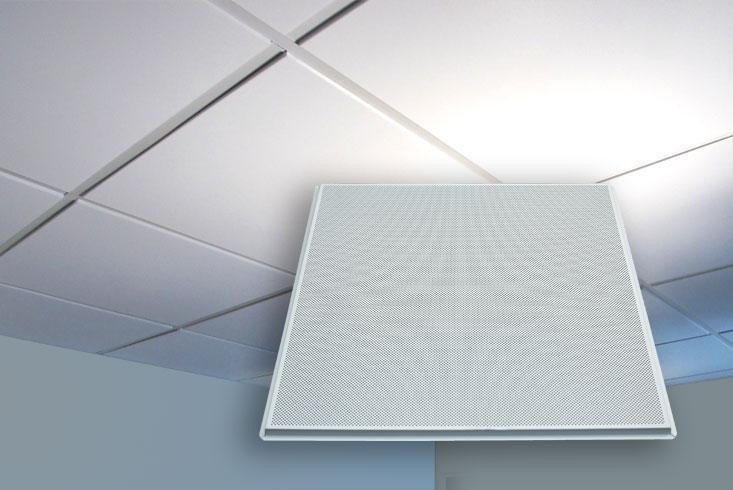Installation Made Easy: Tips for Working with Aluminum Ceiling Tiles

Aluminum ceiling tiles are a stylish and practical choice for home improvement, offering a unique blend of aesthetics and functionality. Whether you’re looking to upgrade a tired ceiling or add a modern touch to your space, aluminum tiles can transform the atmosphere of any room. In this article, we’ll walk you through the installation process, providing helpful tips to make the experience as smooth and rewarding as possible.
Preparing for Installation
Before proceeding with a complete installation, it’s essential to assess your existing ceiling structure. Look for any signs of damage, such as cracks or sagging, which may need attention before proceeding. Measure the area to determine how many aluminum tiles you’ll need. Most tiles come in standard sizes, such as 12×12 inches or 24×24 inches, so having accurate measurements will help ensure you purchase the right amount and avoid any mid-project surprises.
Gathering Tools and Materials
To install aluminum ceiling tiles, you’ll need a few essential supplies. Here’s a handy list:
Measuring tape
Level
Utility knife or tile cutter
Straight edge
Adhesive (if using the glue method)
Ladder
Safety goggles and gloves
Ceiling grid (if using a suspended system)
Caulk or trim (for finishing touches).
Having everything ready before you start will streamline the installation process and minimize disruptions.
Risk Assessment
Safety precautions should always be your top priority when undertaking home improvement projects. Wear protective gear such as gloves and goggles to shield yourself from sharp edges and debris. Ensure your workspace is clear of clutter to avoid tripping hazards, and if you’re using a ladder, make sure it’s stable and positioned on a flat surface. Safeguarding the area will help you work confidently and reduce the risk of accidents.
Types of Installation Methods for Aluminum Ceiling Tiles
When it comes to installing aluminum ceiling tiles, there are a few different methods you can choose from, depending on your preferences and the specific requirements of your space.
Direct Glue Method
The direct glue method is ideal for a quick and straightforward installation. This approach works best on flat, clean surfaces. Here’s how to do it:
Prepare the Surface: Ensure the ceiling is clean and smooth. Remove any old paint or debris to create a good bonding surface.
Apply Adhesive: Use a strong adhesive recommended for aluminum tiles. Apply the adhesive directly to the back of the tile, following the manufacturer’s instructions.
Position the Tile: Press the tile firmly against the ceiling and hold it in place for a few seconds to ensure it adheres well. Use a level to ensure it’s straight.
Suspended Ceiling Grid System
The suspended ceiling grid system provides a more versatile option that allows for easy tile replacement. This method involves creating a framework of metal grids to support the tiles:
Install the Grid: Begin by marking the height of the new ceiling. Install the main tees (long sections of the grid) first, followed by the cross tees, to create a grid layout that matches your tile dimensions.
Ensure Leveling: Use a level throughout the installation to ensure that the grid is even. This step is crucial for a professional-looking finish.
Place the Tiles: Once the grid is in place, simply lay the aluminum tiles into the grid openings. This method allows for easy removal and replacement if needed.
Other Installation Techniques
While the glue and grid methods are the most common, there are alternative techniques worth considering. Some homeowners opt to use clips or nails to secure tiles, especially in areas where permanent installation is desired. This approach can add additional stability but may require more effort during installation and removal.
Step-by-Step Installation Guide
Now that you’ve chosen your installation method, let’s go through the step-by-step process to help you achieve the best results.
Preparing the Ceiling Surface
Before any tiles can be installed, prepare the ceiling surface thoroughly. Clean the area by wiping it with a damp cloth to remove dust and debris. If there are any imperfections or holes, consider patching them with a suitable filler. A smooth surface is essential for a professional finish.
Measuring and Cutting Tiles
Accurate measurements are key to ensuring that your tiles fit perfectly. Measure the dimensions of the area where you’ll be installing tiles and calculate how many you’ll need. If your tiles need to be cut to fit around edges or fixtures, follow these steps:
Use a pencil to mark the area where you need to cut.
Cut carefully using a utility knife or tile cutter. Always follow the manufacturer’s guidelines for cutting aluminum tiles.
Installing the Aluminum Ceiling Tiles
Now comes the exciting part—installing the tiles! Do it based on your chosen method:
Direct Glue Method: Apply adhesive to the back of the tile, position it against the ceiling, and press down firmly.
Suspended Grid Method: Create the grid and lay the tiles into it, ensuring they fit snugly.
Final Touches
Once all the tiles are installed, consider installing trim or molding around the edges to create a polished look. This detail can help conceal any gaps and enhance the overall aesthetic of your new ceiling. Don’t forget to check for any loose tiles; securing any problematic areas will ensure your installation stands the test of time.
Maintenance and Care
Congratulations on your new aluminum ceiling tiles! Now that they’re installed, it’s important to keep them looking their best.
Cleaning Aluminum Ceiling Tiles
Keeping your aluminum tiles clean will ensure they maintain their shine and appeal. Here are some cleaning tips:
Dust Regularly: Use a soft cloth or duster to remove dust and cobwebs from the surface.
Wash Periodically: For a deeper clean, use a mild detergent mixed with water and a soft sponge. Avoid abrasive cleaners, as they can scratch the aluminum surface. Rinse with clean water and dry thoroughly.
Addressing Common Issues
Over time, aluminum ceiling tiles may start to show signs of wear and tear. Here’s how to troubleshoot common problems:
Loose Tiles: If you notice any tiles becoming loose, gently press them back into place. If the adhesive has failed, you may need to reapply the glue or replace the tile.
Alignment Issues: If tiles appear misaligned, carefully adjust them as needed. This can often be done without removing the tiles, especially if you’re using a grid system.
Enjoy Your New Aluminum Ceiling Tiles
Installing aluminum ceiling tiles can be a rewarding home improvement project that elevates the look of your space while providing durability and functionality. By following our step-by-step guide, you can achieve a stunning ceiling that reflects your personal style. And with proper maintenance and care, your aluminum ceiling tiles will continue to impress for years to come. So, roll up your sleeves, get started, and enjoy the transformation of your home!







